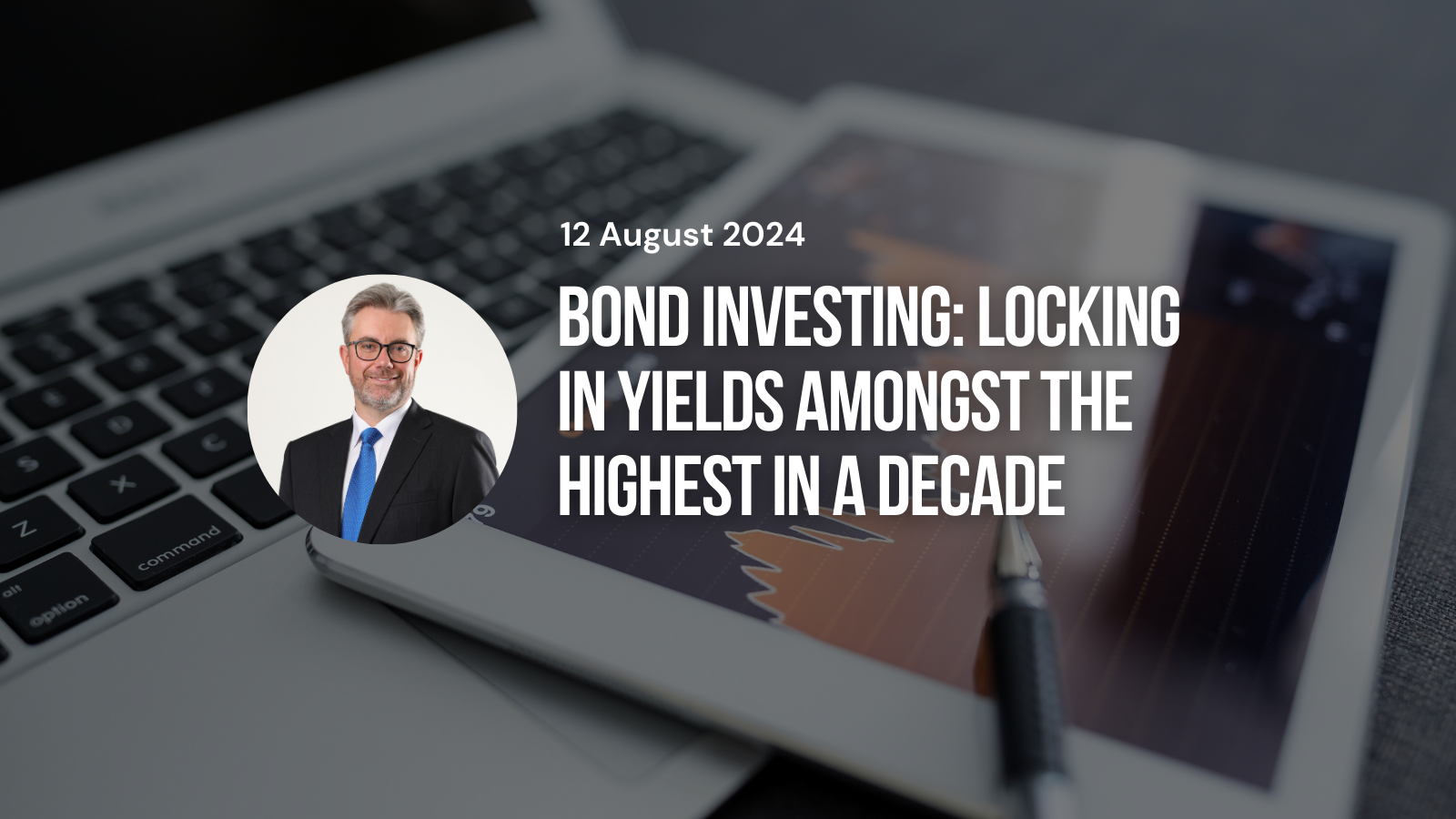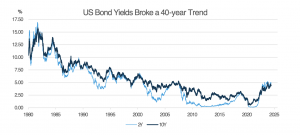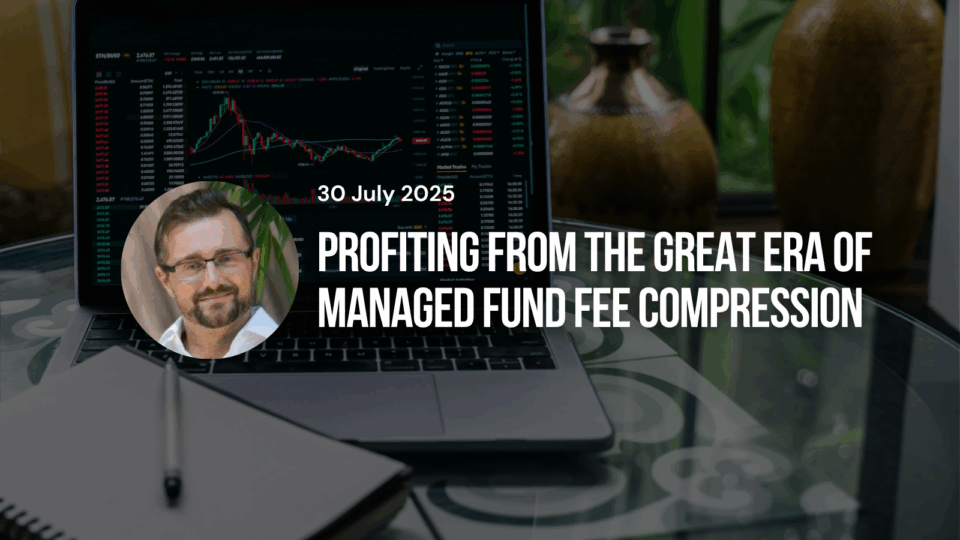
By Philip Brown, Head of Research, FIIG Securities
Monday, 12 August, 2024
For most of the last ten years, bond returns were safe, predictable and far too low to interest most share investors. In fact, bond yields trended lower for around 40 years, from 1981 to 2021. But the pandemic – and, in particular, the government response to the pandemic – has changed that. Governments around the world spent money freely during the lockdowns, and many governments simply gave cash away. Demand was suddenly greater than supply, triggering the first serious bout of global inflation in decades. Central Banks, including the RBA, have raised rates aggressively since 2021, and bond yields are now much higher around the world. The 40-year downtrend in bond yields was broken. As a result, bonds are still safe and predictable, but the interest rates available are much more eye-catching for investors.

Source: FIIG Securities, Bloomberg
These new dynamics change the playing field for bonds vs equities. With the cash rate and government bond yields now offering returns in the mid 4.00% range, corporate bonds are routinely paying yields of 6.00% or even 7.00% for minimal additional risk. Putting these sorts of bonds into your portfolio creates a baseline return that is very attractive to bond investors. FIIG Securities, which specialises in corporate bonds, took these baseline returns and, through a judicious understanding of credit spreads (the credit spread is the difference in yield between a risk-free bond and a corporate bond of similar maturity) and market opportunities, achieved a median return for clients of 9.51%* over 2023-24. The Australian Corporate Bond index returned 6.10%, because the overall index is weighted to a market that is exceptionally safe and conservative.
You’ll notice that bond markets made exceptionally high returns in 2023-24 without the help of a widespread fall in bond yields. Bond yields and prices move inversely to each other; when bond yields rise, bond prices fall, and vice versa. The RBA raised the cash rate once in 2023-24 and the longer-dated bond yields rose slightly over the year. These developments actually made a small negative contribution to overall returns, but were dwarfed by some of the other positive effects.
As we noted, a good part of FIIG’s return is due to high interest rates, but there were other factors as well. Corporate credit spreads have been tightening over 2023-24 because the structure of the economy is changing. Banks are becoming less risky because the regulation that began in the post-GFC period is starting to change risk appetites inside banks. Markets are starting to notice. At the same time, the government sector is becoming more active in the economy. The Federal Government has mostly displayed an understanding of its economic power and has, by and large, declined to spend in the post-COVID period. The Stage 3 tax cuts are their first foray into stimulatory policy.
In contrast, the state governments committed to an exceptional increase in spending on capex over the last few years, which was, in most part, driven by need. Most states had not invested as heavily in capital works over the previous decades as they might have done. With an obvious need for investment and guidance from the RBA that the cash rate was going to stay low for years, states embarked on a large, debt-funded infrastructure program that continues to grow. The result is that more of the borrowing that is driving Australia’s growth is now being undertaken by governments directly, rather than via the private sector and banks. The impact of this is to make banks and other corporates safer in comparison to governments overall, particularly in comparison to state governments. Corporate bonds benefited from this in particular and outperformed government bonds, leading to tighter credit spreads.
FIIG clients also achieved gains from participating in new issues and active trading. Newly issued bonds often outperform other bonds initially, as companies offer slightly higher yields to attract investors. Those who buy at issuance benefit from this higher yield. Active trading, or switching between bonds, also creates extra returns. Bond prices frequently peak above par, before falling back, so knowing when to sell is key to maximising returns. Finally, the FIIG data for the year showed clients who were active in riskier types of bond investing, like high-yield bonds and foreign-currency bonds, did better overall. That’s likely because 2023-24 was essentially a year of benign risk. There had been concerns at the start of the year that the economy might weaken materially, but it’s held up quite well with relatively few scares.
Returns in 2023-24 were strong for a number of reasons, and while past performance does not guarantee future returns, there are some strong reasons to suggest that returns in 2024-25 will once again be much higher than bond returns could achieve for much of the last decade.
With the cash rate already well in excess of neutral, the economy is slowing. At some point, the medium-term outlook will turn to a falling cash rate and bond yields will drop – likely well before the RBA moves. The market tried to suggest this movement in early August, but has been rebuffed by the RBA, so far. Eventually the RBA will get to cutting, but perhaps not quickly.
Until then, however, bond investors have the opportunity to lock in yields that are amongst the highest seen for a decade, and to lock in these yields for the coming five, seven, or ten years. These yields are in the area of 6-8%, depending on the level of risk. These bonds will never double overnight, but they’re not designed to. They are designed to provide a solid, safe return for medium-term investors. And they’re doing that just fine at present.
For FIIG’s sample bond portfolios, please click here.






